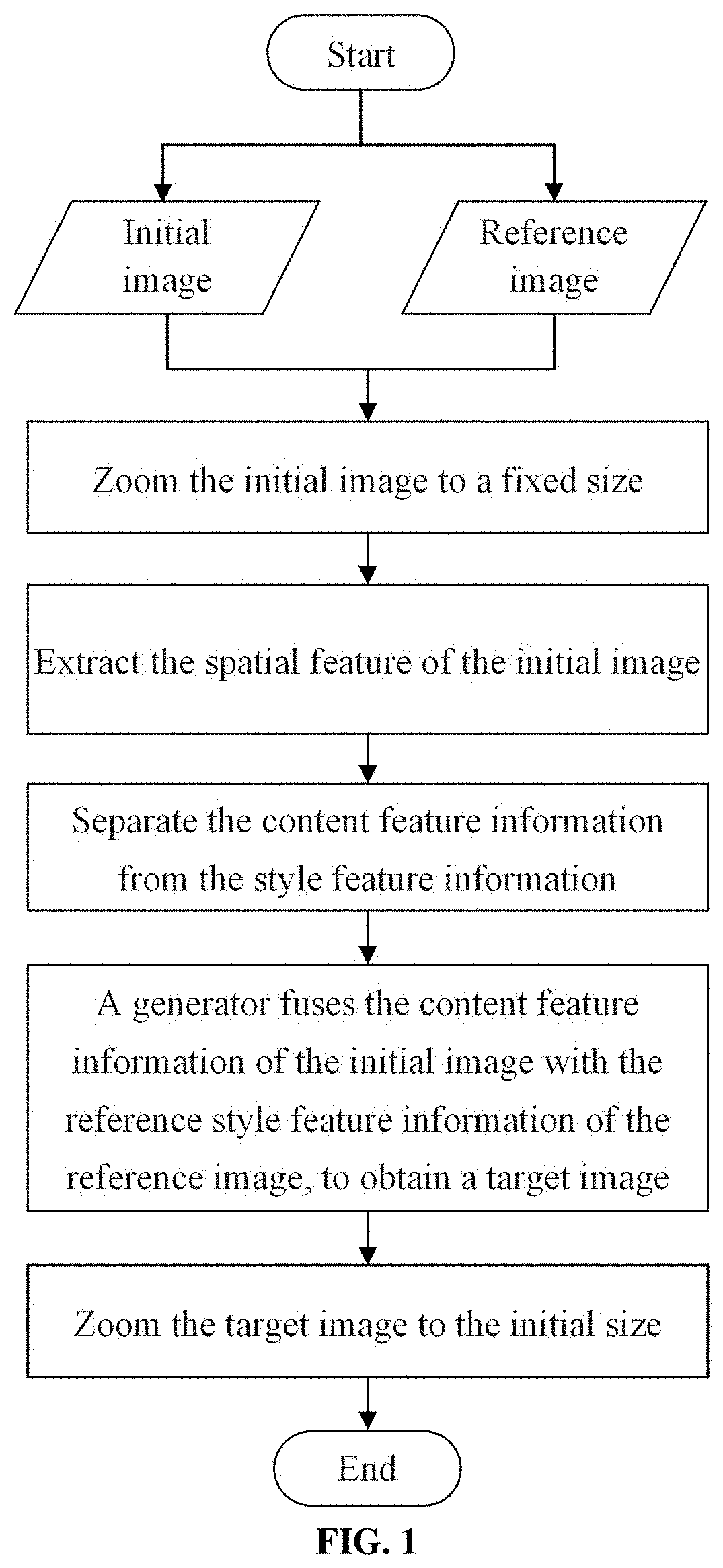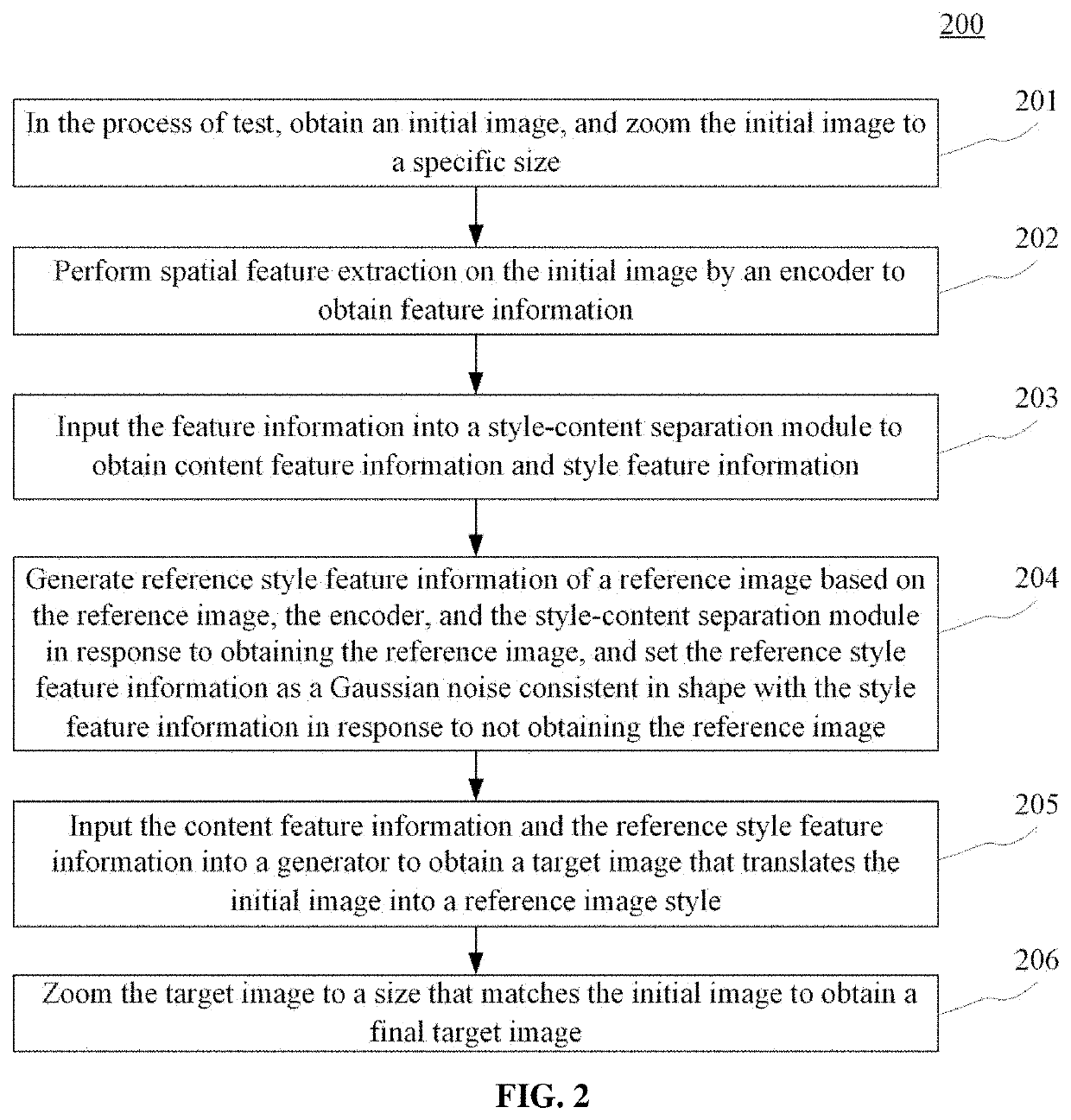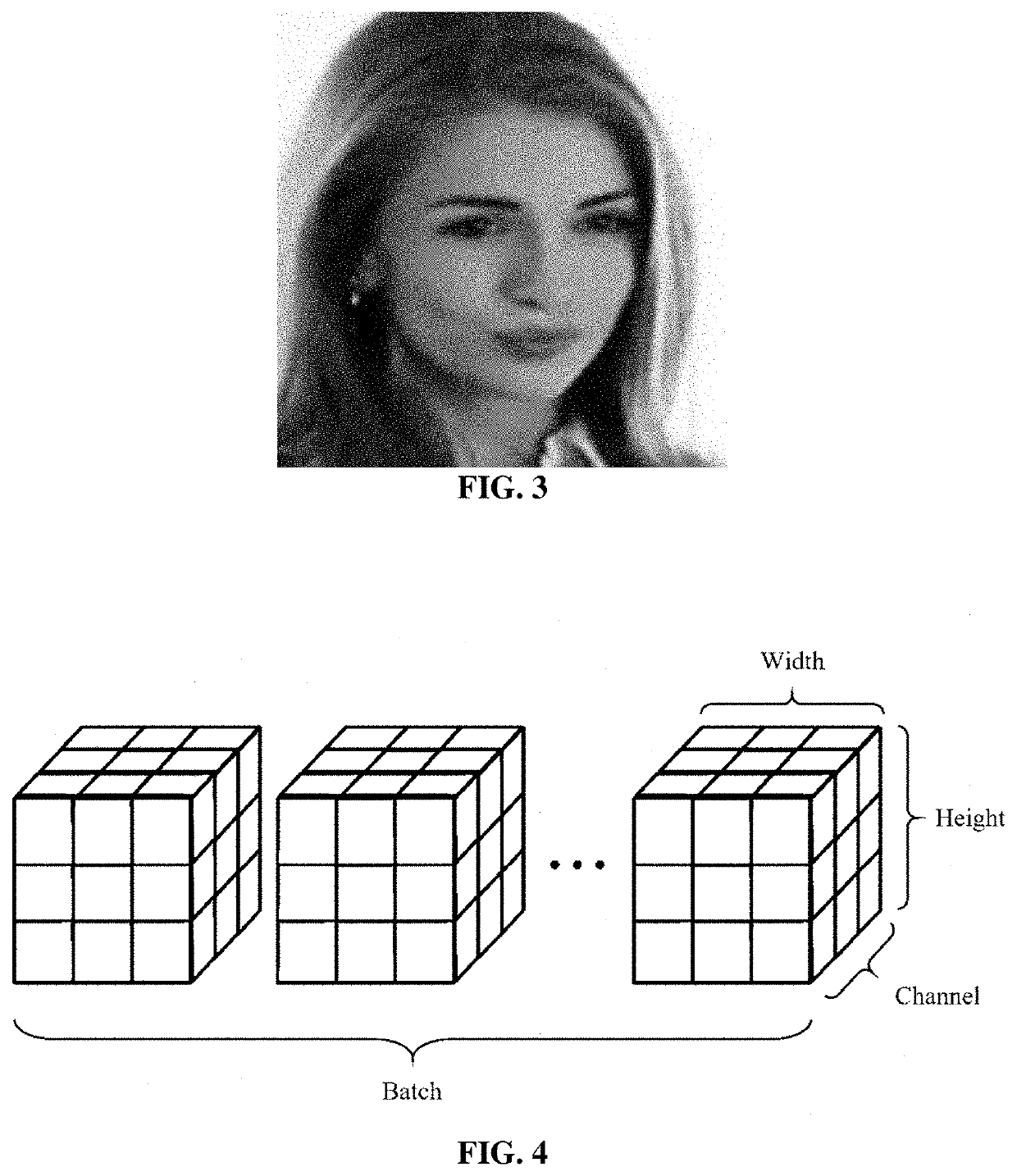Unsupervised image-to-image translation method based on style-content separation
a technology of image-to-image translation and style separation, applied in image enhancement, instruments, biological models, etc., can solve the problems of high-level visual tasks, inability to effectively extract different styles of objects, and inability to ensure that the features of content are effectively focused
- Summary
- Abstract
- Description
- Claims
- Application Information
AI Technical Summary
Benefits of technology
Problems solved by technology
Method used
Image
Examples
Embodiment Construction
[0019]Hereinafter, the embodiments of this disclosure will be described in more detail with reference to the accompanying drawings. Although certain embodiments of this disclosure are shown in the drawings, it should be understood that this disclosure can be implemented in various forms, and shall not be construed as being limited to the embodiments set forth herein. On the contrary, these embodiments are provided for a more thorough and complete understanding of this disclosure. It should be understood that the drawings and embodiments of this disclosure are used only for illustrative purposes, not to limit the protection scope of this disclosure.
[0020]Besides, it should be noted that, for ease of description, only the parts related to the relevant invention are shown in the drawings. In the case of no confliction, the embodiments in this disclosure and the features in the embodiments can be combined with each other.
[0021]It should be noted that such adjuncts as “one” and “more” me...
PUM
 Login to view more
Login to view more Abstract
Description
Claims
Application Information
 Login to view more
Login to view more - R&D Engineer
- R&D Manager
- IP Professional
- Industry Leading Data Capabilities
- Powerful AI technology
- Patent DNA Extraction
Browse by: Latest US Patents, China's latest patents, Technical Efficacy Thesaurus, Application Domain, Technology Topic.
© 2024 PatSnap. All rights reserved.Legal|Privacy policy|Modern Slavery Act Transparency Statement|Sitemap



